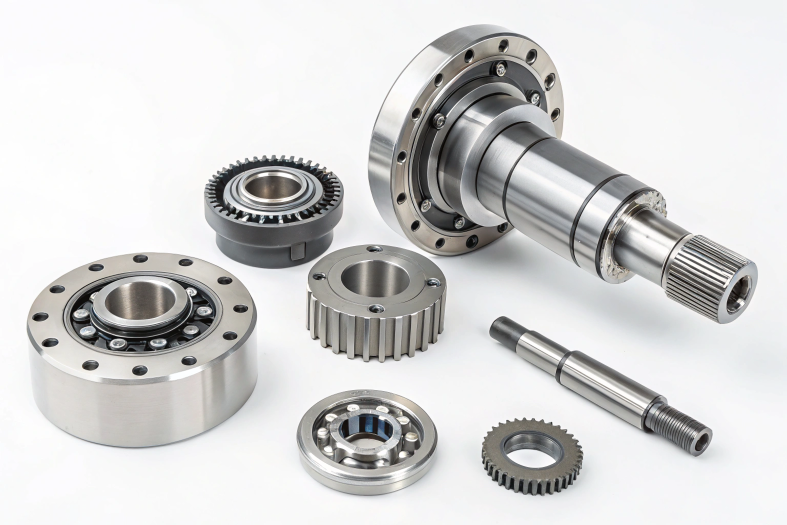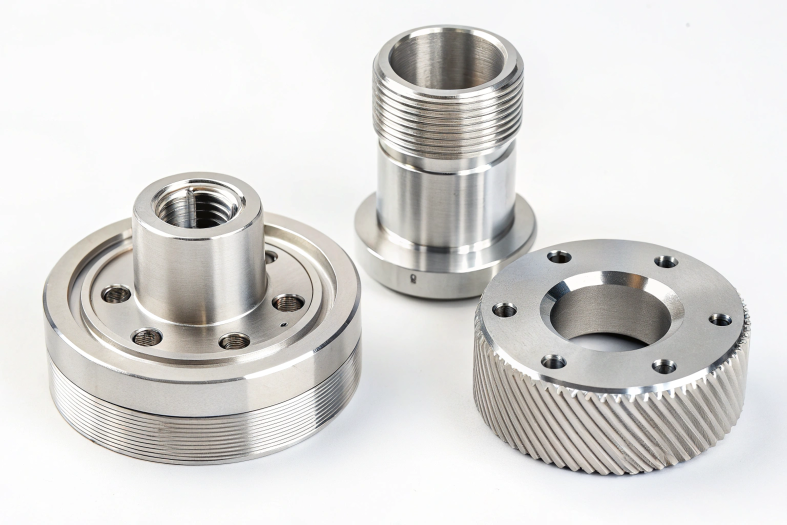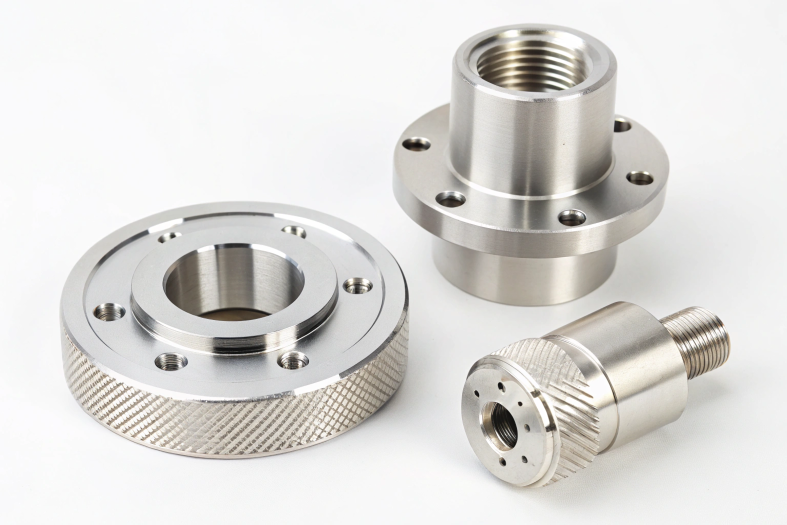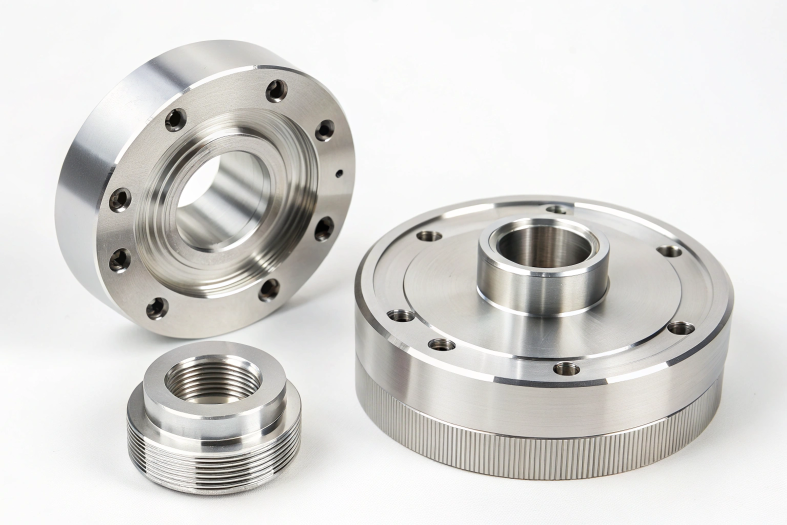CNC machining has been a cornerstone of modern manufacturing for decades, but as technology continues to evolve, the future of CNC machining is poised for exciting changes. From automation and artificial intelligence (AI) to advanced materials and 5G connectivity, the possibilities seem endless. However, with these advancements come challenges—such as keeping pace with innovation and the need for skilled labor in an increasingly automated environment. For companies that rely on CNC machining, staying ahead of these trends is critical to maintaining a competitive edge.
Direct Answer:
The future of CNC machining is driven by advancements in automation, artificial intelligence, and additive manufacturing. These innovations will enable more efficient production, greater precision, and reduced human error, positioning CNC machining as a vital part of Industry 4.0.

Introduction: The Evolution of CNC Machining
CNC (Computer Numerical Control) machining has come a long way since its inception in the 1950s. Originally developed for the aerospace industry to automate the manufacturing of complex parts, CNC machining revolutionized the way manufacturers approached precision and production efficiency. What began as a process reliant on punch cards and rudimentary computers has now evolved into a highly advanced, automated system capable of producing complex parts at unmatched speeds and precision.
Today, CNC machining remains a critical backbone of modern manufacturing, with advancements in hardware, software, and integration allowing it to meet the demands of industries ranging from automotive and aerospace to medical devices and electronics. With ongoing technological advancements, the future of CNC machining is poised for even more transformative changes.
The Role of Automation and AI in CNC Machining
One of the key drivers of change in CNC machining is the increasing integration of automation and artificial intelligence (AI). Automation is already reshaping traditional machining processes, allowing manufacturers to reduce human intervention, enhance productivity, and minimize errors.
AI's role in CNC machining is also gaining momentum. AI-driven algorithms can monitor machine performance, predict failures before they occur, and automate adjustments to ensure optimal production quality. Predictive maintenance powered by AI reduces downtime and maintenance costs, making CNC machines more reliable and cost-effective in the long run.
The integration of automation and AI not only enhances efficiency but also enables manufacturers to produce high-quality parts with greater consistency, speed, and precision—important for industries where every detail counts, such as medical devices and aerospace.
Integration with Industry 4.0: Smart Factories
Industry 4.0, the next wave of the industrial revolution, is about connecting physical machines with the digital world to create "smart factories." This convergence of the Internet of Things (IoT), big data, and CNC technology is transforming traditional manufacturing operations into highly integrated, data-driven environments.
CNC machines equipped with sensors can now communicate with other devices in real-time, collecting valuable data that helps optimize processes. For example, operators can monitor the health of machines remotely, analyze production data to optimize workflows, and track product quality in real-time. These insights are critical for improving efficiency, reducing waste, and ensuring that every part is produced to spec.
As smart factories continue to evolve, CNC machining will become even more adaptable, allowing manufacturers to respond quickly to market demands, reduce lead times, and ensure superior product quality.
Advanced Materials and CNC Machining
The future of CNC machining is also shaped by advancements in materials science. While traditional metals like aluminum and steel remain staples in manufacturing, the industry is increasingly turning to advanced materials such as lightweight alloys, composites, and high-performance polymers.
These materials offer unique properties, like higher strength-to-weight ratios and resistance to extreme temperatures, making them ideal for industries like aerospace, automotive, and medical devices. CNC machining is one of the few processes capable of accurately shaping these complex, sometimes fragile materials.
For instance, in aerospace, manufacturers are using CNC machining to create lightweight yet durable components that can withstand high stress and extreme temperatures. The ability to machine materials like carbon fiber composites with precision is opening up new opportunities for product innovation and performance enhancement.
The Impact of 3D Printing on CNC Machining
While CNC machining has long been the go-to for producing high-precision parts, the rise of 3D printing is creating new possibilities for hybrid manufacturing. 3D printing offers unmatched flexibility in terms of part design and can be used to create complex geometries that might be difficult or impossible to achieve with traditional CNC machining.
Rather than replacing CNC machining, 3D printing is complementing it. Manufacturers are increasingly using both technologies in tandem to achieve the best of both worlds—leveraging CNC’s precision and 3D printing’s design flexibility. For example, 3D printing can create prototypes or low-volume parts with complex shapes, while CNC machining handles high-precision production.
The future will likely see a more seamless integration between 3D printing and CNC machining, with both technologies being used to optimize the production process and reduce costs.

Increased Precision and Efficiency
Precision has always been a hallmark of CNC machining, but as technology advances, it continues to reach new heights. Innovations like closed-loop systems, which enable real-time feedback during machining, are making CNC machines more precise and efficient than ever before. These systems automatically adjust the machine’s settings based on real-time measurements, ensuring parts meet the strictest tolerances.
Additionally, advances in tooling, cutting techniques, and CNC software have dramatically improved both speed and precision. Faster processing times and higher precision result in higher-quality products and lower production costs, which is vital for industries that rely on exacting standards, such as medical devices and semiconductor manufacturing.
Sustainability and Green Manufacturing in CNC Machining
As environmental concerns become more pressing, the manufacturing industry is focusing on sustainable practices. CNC machining, known for its material efficiency, is contributing to green manufacturing efforts by reducing waste and energy consumption.
Advanced CNC machines are designed to minimize material waste, using only the precise amount needed for each part. Additionally, manufacturers are adopting energy-efficient technologies, reducing the carbon footprint of their operations. With growing demand for eco-friendly products, CNC machining will play a crucial role in enabling sustainable manufacturing practices across industries.
Future CNC technologies may also involve using bio-based or recycled materials, further aligning the machining process with global sustainability goals.
The Growing Demand for Customization and Small-Batch Production
As consumer preferences evolve, industries are increasingly turning to customization and small-batch production. CNC machining, with its ability to produce highly precise parts in small volumes, is perfectly positioned to meet this demand.
In industries like medical devices, where personalized solutions are often required, CNC machining is invaluable. It allows manufacturers to quickly produce custom parts with high precision, ensuring they meet the unique needs of each patient or application.
CNC's adaptability to small-batch production also allows for rapid prototyping and low-volume manufacturing, making it an ideal choice for industries like automotive and electronics, where quick iteration is crucial.
Training and Workforce Development in CNC Machining
As CNC machining technology advances, so too does the skillset required of operators. The future of CNC machining relies heavily on skilled workers who are proficient in both the operation of sophisticated machinery and the interpretation of complex data generated by smart systems.
To keep pace with these changes, there is a growing need for workforce development. Educational institutions and manufacturers must collaborate to ensure workers are trained in both traditional machining techniques and the latest technologies like AI, automation, and Industry 4.0 systems.
A focus on hands-on experience combined with digital literacy will be essential for producing the next generation of skilled CNC machinists.

Conclusion:
The future of CNC machining is bright, with advancements in automation, AI, smart factories, materials science, and sustainability paving the way for even greater precision, efficiency, and customization. As the industry continues to evolve, manufacturers must stay ahead of the curve, adapting to new technologies and processes to maintain a competitive edge.
For CNC machining to remain a cornerstone of modern manufacturing, it will require ongoing innovation, investment in training, and a commitment to sustainability. The next decade promises to be an exciting one, as CNC machining continues to shape the future of industries worldwide.
FAQ:
Is there a future in CNC machining?
Yes, CNC machining has a strong future ahead. With continued advancements in automation, AI, smart factories, and materials science, CNC machining remains at the forefront of modern manufacturing. Its ability to deliver high-precision, cost-effective solutions will keep it in demand across industries like automotive, aerospace, medical devices, and more. The future will see even greater integration with emerging technologies like 3D printing, enabling hybrid manufacturing processes that enhance flexibility and productivity.
Will CNC machinists be replaced?
While automation and AI are transforming the role of CNC machinists, they are unlikely to be fully replaced. Instead, the role of a CNC machinist is evolving. Machines are becoming more automated and self-regulating, but skilled operators are still required to monitor processes, troubleshoot, and make adjustments. CNC machinists will increasingly focus on overseeing machines, interpreting data, and managing complex processes, as their tasks become more technologically advanced.
What is the future outlook for CNC machinists?
The future outlook for CNC machinists is promising, but the skillset required is changing. As CNC technology becomes more sophisticated, machinists will need to embrace digital tools, automation, and AI. Those who invest in continuous learning, particularly in fields like programming, data analysis, and robotics, will have a competitive advantage. CNC machinists will play a critical role in managing smart factories, ensuring high precision, and maintaining the quality of automated processes.
What is the next step for CNC machinists?
The next step for CNC machinists is to adapt to the growing role of automation and AI in manufacturing. As machines become more autonomous, machinists should focus on learning how to program and optimize these advanced systems. Upskilling in areas like data analysis, robotic integration, and smart manufacturing technologies will be crucial. The future CNC machinist will blend traditional machining knowledge with a deep understanding of digital tools, enhancing both efficiency and quality in the production process.


